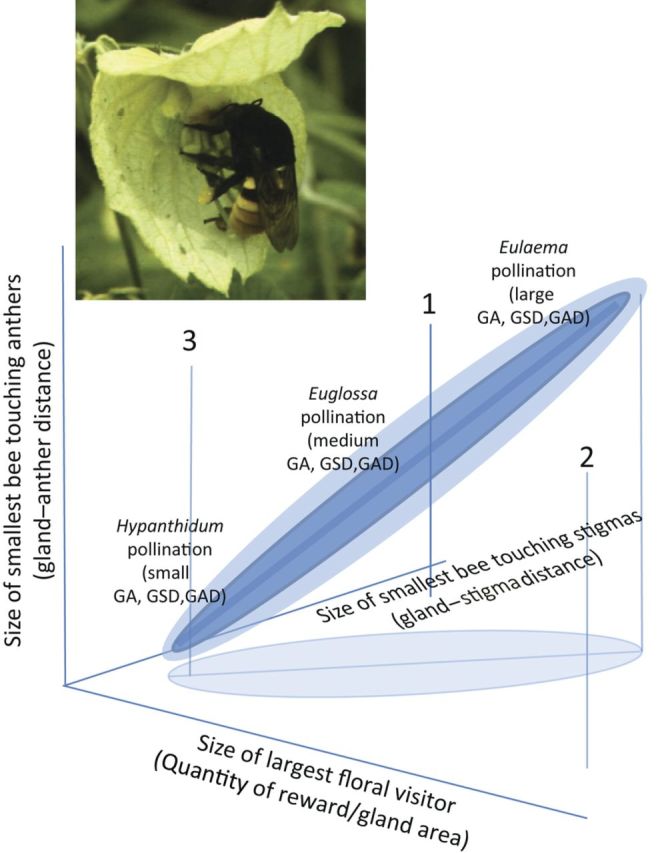Figure 3.

Adaptive ‘ridge’ (a series of concentric cigar-shaped volumes) in three-trait space, capturing fitness trade-offs in Dalechampia spp. with resin rewards. Adaptation to small-bee pollinators precludes visitation by large bees, while adaptation to large-bee pollinators precludes small-bee pollinators. The darker the shade of blue, the higher the fitness in that volume. Off-diagonal volumes (clear) experience lowest fitness. Region 1 is a volume of low fitness because only small bees are attracted, but only large bees contact stigmas and anthers. Region 2 is a volume of low fitness because resin costs exceed pollination benefits, and/or greater interspecific pollination occurs. Region 3 is a volume of low fitness because, although the small bees attracted touch the stigmas, they do not carry pollen because they do not contact the anthers.
